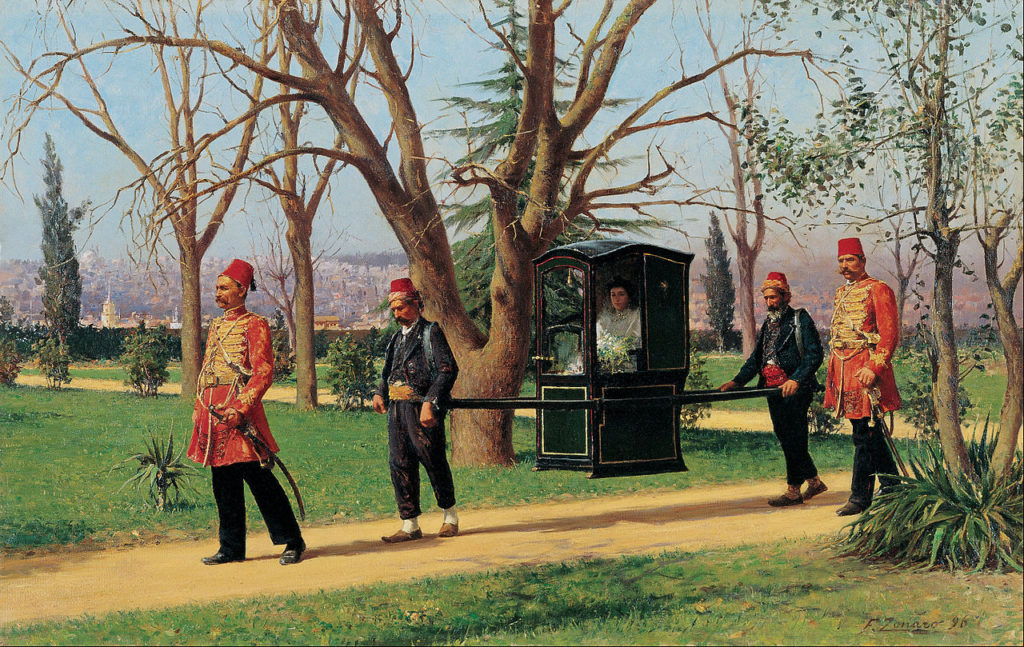[Greek] κάθημαι (kathēmai), [Latin] sedere: to sit down, to be sedentary, to sit, to dwell, to be seated; 89 scriptural references

Background information:
Greek Hellenism: This term means to sit, to sit down, to rule (as judges), to be spectators, to sit still, to be idle (sedentary), to sit down (engaged in business), and to be stationed. Reclining at the table (meal) was generally a Hellenistic tradition. As with other cultures, sitting occurs outdoors, on stones, under trees, on hill tops, at a well, by the shore, and on mountains. Deities and gods are often found sitting (stationary) while man pray before them. Greek gods sit in judgment of the dead. The emperor (leader) and senators sit in assembly enacting laws. Philosophers (teachers) sit while teaching their students. Other reasons for sitting include occupations, mourning, grief, begging, and recreation.
Homer’s Illiad 1.569 states “He spoke, and ox-eyed lady Hera was seized with fear and sat down in silence, curbing in heart.” Euripides’ Electra 315 states “But my mother, in the spoils of Troy, is seated on her throne, and at her chair stand slaves from Asia, my father’s plunder.” Aeschylus’ Libation Bearers 919 states “Do not accuse him who suffered while you sat idle at home.” Xenophon’s Economics 4.2 states “The illiberal arts are held in utter disdain in our state. For they spoil the bodies of the workers and the foremen, forcing them to sit still and live indoors.” Herodotus’ The Histories 3.144 states “So when the Persians brought Syloson back to Samos, no one raised a hand against them, but Maeandrius and those of his faction offered to evacuate the island under a truce; Otanes agreed to this, and after the treaty was made, the Persians of highest rank sat down on seats facing the acropolis.”
Old Testament: This term also essentially means to sit or to sit down. In the early period of Israel’s history, the ark represented God’s throne. Daniel sees God enthroned. The king, accorded with great dignity, is closely associated with the presence of God. The Sanhedrin and elders sit settling matters of the Law. Teachers (rabbis) are also depicted sitting in their instruction of their students (disciples). The poor and mourning also sit.
Cain left the Lord’s presence and settled in the land of Nod, east of Eden (Gen.4:16).Take your throne at my right hand, while I make your enemies your footstool (Psa.109:1). The Lord appeared to Abraham, as he sat in the entrance of his tent, while the day was growing hot (Gen.18:1). You say on a couch prepared for them, with table spread before it (Ezek.23:41). She used to sit under Deborah’s palm tree (Jdg.4:5). Only the prince may sit down in it to eat his meal in the presence of the Lord (Ezek.44:3). Then David came in and sat in the Lord’s presence (1Chr.17:16).
New Testament: This term, meaning to sit down or reside, appears quite frequently. Jesus often sits down in places like in the open, by the shore, on the mountains, and in the garden. For Jesus, the throne is an expression of divine authority and dignity. God’s opponent, the Antichrist, can also sit on a throne. The Messianic King is enthroned along with God and His community. Herod, the chief priest, Sanhedrin, the Sadducees, and Pharisees sit in judgment in legal and spiritual matters. Jesus, as the Son of Man, is seated at the right of the Father. Jesus follows Rabbinic tradition in sitting while teaching the disciples.
Etymology: The Greek noun kathedra means chair.
Conclusion
Cathedral, sedan, sedentary, sediment
In the Greek Hellenistic era, I was really surprised by the many uses and meanings of this term besides sitting. Some of the more nuanced meanings include working (while sitting), keeping prostitutes, and mourning.
As with the gods (deities), the throne becomes identified with God and the king. Rabbis sit while instructing their disciples. The Jewish legal and spiritual leaders also sat in their administrative functions.
In the Old Testament, the Queen Mother, the mother of the ruling king, held a very important office in the royal court. The Queen mother, sitting at the king’s right hand, shares in the king’s royal authority (Psa.110). As the Queen Mother would enter into the court, the King would get up and bow down to her. The Queen Mother also assumes the role of an intercessor, bringing the peoples’ petitions to the king. In turn, the king would accept the Queen Mother’s requests (1Kgs.2:19-20).
Jesus sat down at many places. It was interesting to discover some of the motivations for sitting, such as begging and mourning. Mary, mother of Jesus, is also called the Queen Mother. Likewise, Mary also acts as an intercessor for us. We can bring our requests (petitions) to her. Like the Old Testament king, Jesus will listen to His mother. Mary continues to sit close to her Son Jesus.
The cathedral (building) is the seat of authority (both literally and figuratively) of the bishop. The priest (pastor) also has his seat of authority at the church.
The chair sedan was originally a covered chair with poles. This term was coined in the 1630’s. This term was probably derived from the Italian chair (sedes). In 1912 the sedan becomes as a closed automobile seating four or more.
Sit tight for my next poignant post. I will pull no punches!
